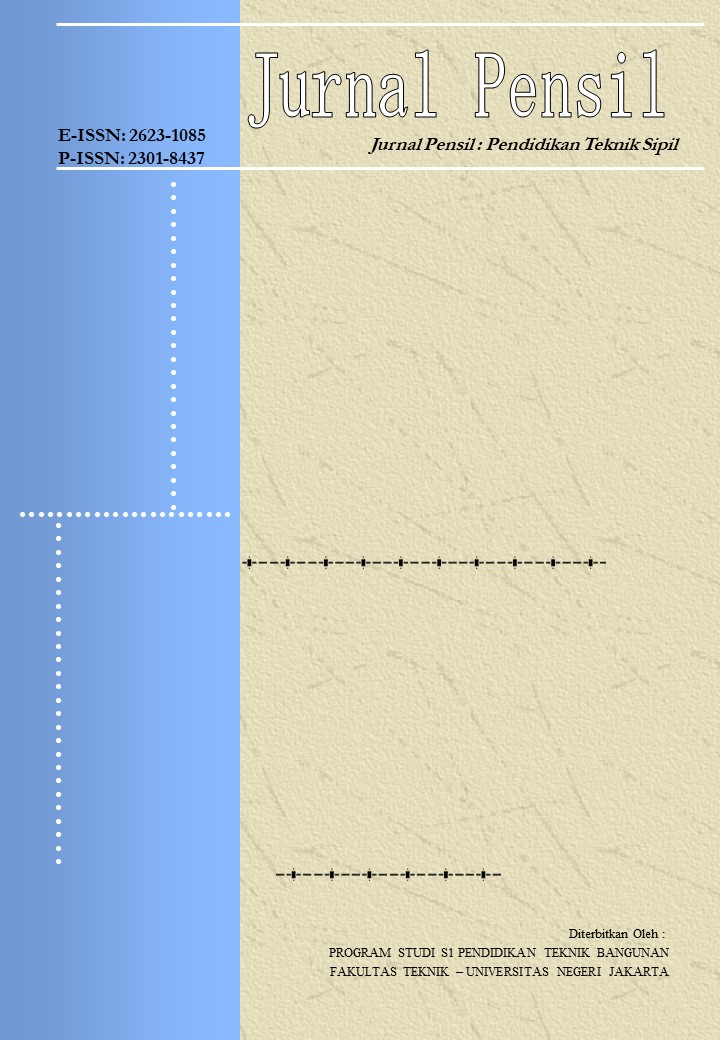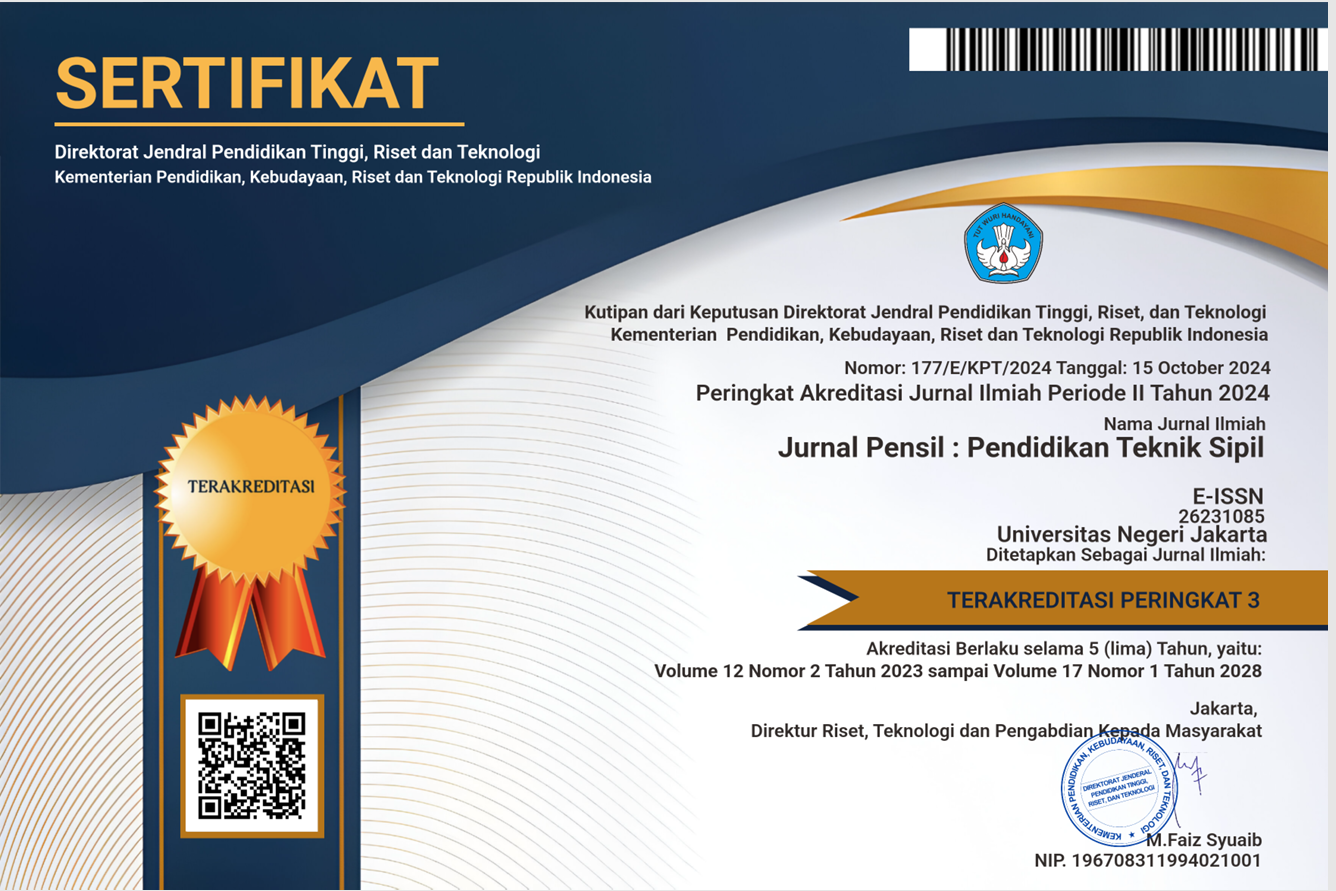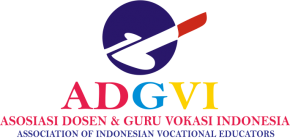INVESTIGASI KAWASAN RAWAN BENCANA LONGSOR DENGAN MENGGUNAKAN SISTEM INFORMASI GEOGRAFIS STUDI KASUS KABUPATEN MADIUN
DOI:
https://doi.org/10.21009/jpensil.v10i2.20253Keywords:
Landslide, GIS, MappingAbstract
Geographically, although Indonesia has the potential for tremendous natural resources, it is also prone to natural disasters, particularly landslides. It is due to the large number of highlands and mountains, including Madiun Regency which has Mount Wilis. Madiun Regency is an area affected by landslides. Therefore, this paper aimed to investigate landslide hazard areas (KRB) in Madiun Regency using a Geographic Information System (GIS) with secondary data sourced from SRTM USGS, BMKG data, Google Earth, and BPS data for Madiun Regency which was processed using ArcGis 10.7 software with the Union Overlay Analysis method based on weighting on the landslide disaster parameter map. The processed data produced a map of population density, geology, rainfall, slope, and a map of the Landslide KRB in Madiun Regency. The Landslide KRB Map shows that Madiun Regency has a relatively low (safe) hazard to landslides. The areas with the potential to experience landslides are in the west, including Pilangkenceng, Balerejo, Jiwan Districts, and parts of Kebonsari and Dolopo Districts with an area of 192.07 km2 for high hazard and 1.39 km2 for very high hazard. It is because these districts have extreme rainfall with an intensity of above 150 mm and a relatively dense to very dense population density. The Landslide KRB Map of Madiun Regency can be a reference source for residents and the public to determine the hazard points of landslides in Madiun Regency so that they can prepare for landslide disaster mitigation to minimize the impacts and losses that occur
References
Guillard, C. & Zezere, J. (2012). Landslide Susceptibility Assessment and Validation in The Framework of Municipal Planning in Portugal: The Case of Lourses Municipility. Environmental Management, 50(4), 721–735. https://doi.org/10.1007/s00267 -012-9921-7
Kartasapoetra, A. G. (1990). Kerusakan Tanah Pertanian dan Usaha untuk Merehabilitasinya. Jakarta: Bina Aksara.
Monteiro Santos, F.A., Mateus, A., Figueiras, J., & Gonçalves, M.A. (2006). Mapping Groundwater Contamination around a Landfill Facility using the VLF-EM Method — A Case Study. Journal of Applied Geophysics, 60(2), 115–125. https://doi .org/10.1016/j.jappgeo.2006.01.002
Naryanto, H. S. (2013). Analisis dan Evaluasi Kejadian Bencana Tanah Longsor di Cililin, Kabupaten Bandung Barat, Provinsi Jawa Barat Tanggal 25 Maret 2013. JSTMB, 8(1), 39–49.
Rizkianti, C. (2017). Pengaruh Kemiringan Lereng terhadap Stabilitas dan Jarak Jangkauan Longsor Setelah Hujan dan Gempa Bumi [Skripsi]. Bandung: Universitas Pendidikan Indonesia.
Utomo, W. H. (1989). Konservasi Tanah di Indonesia. Jakarta: CV Rajawali











.png)
.png)
1.png)

